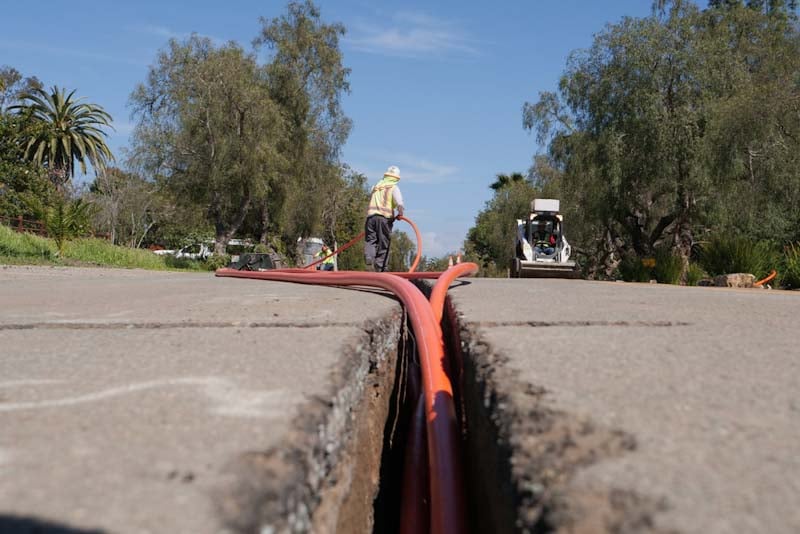In today’s telecom industry, network reliability and efficiency are more critical than ever. Customers expect uninterrupted service, and operators face increasing pressure to reduce operational costs while improving response times. However, network operations teams still struggle with outdated processes, siloed data, and inefficient workflows, leading to unnecessary delays and costly truck rolls.
As networks become more complex and interconnected, broadband operators need to rethink how they approach network maintenance, troubleshooting, and workforce efficiency. Here’s a look at the top operational challenges broadband operators face today, and how they can solve them with modern best practices and technology.
1. The hidden cost of poor data access
One of the biggest challenges in telecom field operations is accessing the right data at the right time. For years, engineers relied on paper maps, static spreadsheets, and fragmented systems to locate network assets and diagnose issues. Even as operators have moved toward digital tools, many still face problems due to siloed systems that don’t communicate with each other and provide contradictory information.
Why this matters?
-
Location data is often inaccurate or incomplete, making it difficult for field teams to find underground assets, rear-easement equipment, or infrastructure inside buildings.
-
Critical network data is trapped in separate systems, requiring engineers to call into HQ or switch between multiple platforms just to gather the information they need.
-
Field teams lose valuable time tracking down the right contacts, whether it’s a building manager for access approval or the correct maintenance record for troubleshooting.
Best practice: native mobile access to real-time data
Equip field teams with natively mobile tools that provide up-to-date maps, asset locations, and contact information on a single shared environment.
Unify disparate data sources so engineers can quickly see which equipment needs servicing, which fibers are impacted, and what past work has been done, all from their phone or tablet.
Enable real-time updates so as-built changes and work notes are instantly accessible across teams and tasks.
The more seamless data access becomes, the less time engineers spend searching for and comparing information, and more time they spend fixing issues.
2. Digital transformation isn’t just about eradicating paper maps, it’s about workflow efficiency
Many telcos believe they have “digitized” their operations simply by replacing paper maps with static PDFs or digital records. However, true digital transformation means optimizing how engineers interact with data and complete their work.
Why this matters?
-
Some operators still rely on printed maps or manual annotations, slowing down troubleshooting and increasing the risk of errors.
-
Many field techs still have to return to the office to update work records, creating a gap between real-world fixes and database accuracy.
-
Workflows haven’t evolved to match new technology, leading to frustrated engineers who don’t see the value in digital tools.
Best practice: interactive, natively mobile workflows
Move beyond static records: engineers should be able to update network data and capture changes in real time from their mobile device.
Ensure usability for field teams: if a tool requires too many clicks or doesn’t fit within existing workflows, engineers won’t adopt it.
Design for flexibility: not every technician will work the same way, so systems should accommodate different processes while enforcing best practices.
The best digital workflows are invisible. They help engineers complete jobs faster without adding extra steps or complexity.
3. Breaking down data silos in fiber network operations
Even when operators have the data they need, it’s often locked away in separate application silos across different departments. Customer service teams, network engineers, and field crews each use different systems, making it difficult to get a unified view of network performance and maintenance history.
Why this matters?
-
Customer service reps may not have full visibility into network issues, leading to unnecessary truck rolls when problems could have been diagnosed remotely.
-
Network engineers track service issues in separate systems, meaning field teams often don’t have the full troubleshooting history when they arrive at a job site.
-
Disconnected systems slow down fault resolution, as teams waste time manually cross-referencing information or waiting for answers from different departments.
Best practice: a single source of truth for network operations
Consolidate network data so service teams, engineers, and field crews work from the same real-time information.
Ensure mobile access to critical insights, such as past service records, equipment configurations, and fault histories.
Use AI to correlate network events and past tickets, allowing engineers to quickly identify repeat issues or underlying patterns in network failures.
A real-time network operations platform removes the guesswork, ensuring that field teams can make data-driven decisions instead of relying on outdated spreadsheets or disconnected databases.
4. AI in fiber network operations: making data actionable
AI has the potential to transform network operations, but raw data alone isn’t enough. The real power of AI lies in correlating multiple data points to detect failures early, optimize dispatching, and streamline troubleshooting. However, integrating AI effectively into network operations comes with challenges that operators need to address.
Why this matters?
-
Too much data can be overwhelming. Engineers need AI-powered insights that highlight actionable recommendations, not just raw information. Without clear prioritization, AI can create more noise than value.
-
AI can misinterpret symptoms instead of root causes. Without complete data, AI may flag normal network fluctuations as faults, leading to unnecessary truck rolls and wasted resources.
-
Inconsistent or siloed data weakens AI decision-making. If network records are fragmented or outdated, AI struggles to provide accurate fault detection, leading to inefficiencies.
Best practice: AI-Powered network insights
Prioritize AI-driven insights to focus on actionable recommendations: AI should filter data intelligently, surfacing only the most relevant issues for engineers.
Improve AI accuracy with real-time, contextual network data: Integrating real-time performance metrics and historical trends helps AI distinguish real faults from transient anomalies.
Ensure AI insights are based on a complete data set: Breaking down data silos and improving validation enhances AI-driven troubleshooting and fault detection.
The best AI-powered workflows are seamless and intuitive, providing engineers with relevant, real-time insights that support decision-making without adding unnecessary complexity. AI will play a crucial role in advancing telecom network operations by enabling predictive analytics, automating data quality improvements, and optimizing network performance.
The future of fiber network operations: a connected, intelligent field workforce
The future of fiber network operations isn’t just about better maps or more data, it’s about creating a truly connected, intelligent workforce.
Operators that embrace natively mobile, AI-enhanced network operations will benefit from:
Faster fault resolution with real-time data access and AI-driven troubleshooting.
Lower operational costs by reducing unnecessary truck rolls and improving first-time fix rates.
Better workforce efficiency with seamless mobile workflows that engineers actually use.
The broadband operators that win in the future won’t just be the ones with the best network, they’ll be the ones that empower their workforce with the best tools.
Are you ready to take network operations to the next level?
By breaking down data silos, enabling real-time mobile access, and leveraging AI for smarter decision-making, operators can transform network operations from a cost center into a competitive advantage. To learn more about this topic, tune into Bitesize Fiber, the podcast where we break down the biggest challenges and best practices shaping the future of fiber and telecom networks, one bite at a time.
Discover how IQGeo assists fiber operators in implementing best practices for network operations, hear directly from our customers.

Product Manager, IQGeo
Similar articles:














